I took a poll a few weeks ago to which several hundred people replied. In the survey I inquired as to how many of my friends own firearms, the reason for owning them, and how much they spend annually on ammo, new weapons and accessories. The majority of my friends are former/current military, outdoor enthusiasts and law enforcement. Of the hundreds of replies received stating firearm ownership, the average annual expenditure was around $5,000. (Fearing cataclysmic backlash, several on the list omitted exact numbers suspecting their significant others would be able to see their answer.) The most common answer as to why they owned and frequently shot firearms was, “to be prepared in the event of an emergency.”
A series of follow up questions led to the justification being similar for most, in the event of a mass shooting or robbery people want to have the ability to protect themselves and preserve the lives of the innocent people around them. This is a noble and altruistic mentality, no doubt, but what is the likelihood that all of that preparation will actually help to save a life? Can those resources be more logically applied to produce a more favorable result?
In 2012 there were eight mass shootings in the US, resulting in 43 deaths (the deadliest year up until that point). To put that in perspective, that same year, there were 92 deaths by auto accident… per day! (30,800 total.) From 2006 to 2010 close to 48,000 people were killed by firearms in the United states. In 2010, five and a half million new firearms were manufactured in the United States.
So in 2012, provided that at each mass shooting event, there was a person like one of my friends, a person who is well versed and trained in the use of a firearm and carrying at the time of the incident, and were able to shoot the assailant prior to them taking anyone else’s life, then 35 people’s lives would have been saved. (This takes into account that the 8 assailants were wounded fatally by the person intervening)

Logic dictates that the probability of you encountering a medical emergency requiring the utilization of a firearm to positively influence the outcome is relatively nonexistent. However, there is a reasonable probability that you will encounter a life threatening emergency that can be positively influenced with the appropriate application of medical equipment and knowledge.
This begs the question, if the purpose of spending so much in time and money on firearm training is to preserve human life, wouldn’t it make more sense to divert a portion of that time and money to learning traumatic casualty care and carrying an aid pouch instead of or in addition to your firearm? Wouldn’t the people around you be better served if your capacity to perform rapid assessment and treatment of their condition was as good as your ability to go four for five from 25 meters? Wouldn’t you actually be able to preserve more life that way?
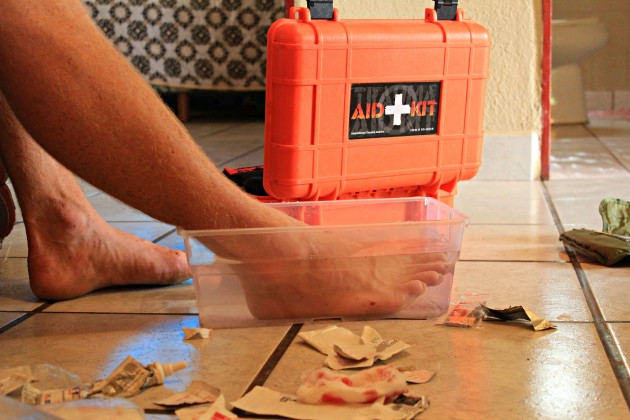
Please understand that I am in no way anti-gun ownership. I personally own a pistol, a hunting rifle and a shotgun. I also carried two weapon systems on each of my four deployments to Afghanistan and Iraq. Statistically speaking, there was a far greater need for me to do so in those countries given my profession. Since returning from my last deployment I have not carried a weapon. I do, however, carry three different first aid kits. Aside from my time in combat, I have never been in a situation that a firearm was beneficial. I have, however, used the contents of my aid kit, on average, about once a month.
These are the three that I carry:
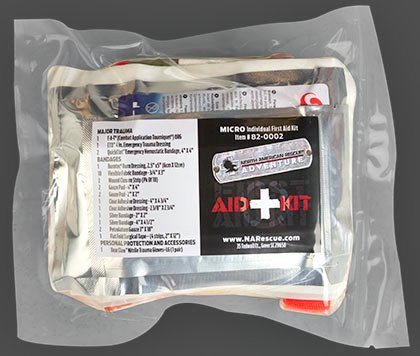
- Enough equipment to perform self aid or aid to one minor to severe injury.
- I have two of these. One in my ultra distance running pack and another in my laptop bag.
— Contents:
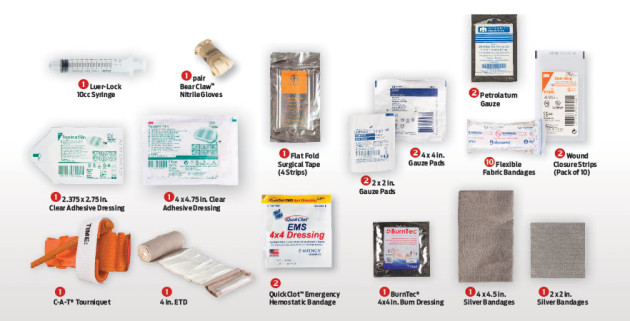
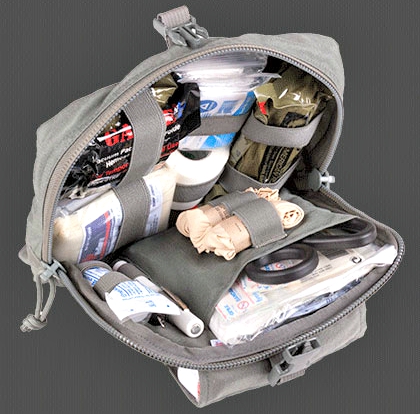
- Enough equipment for a couple of minor wounds or one serious casualty.
- A beefed up version of the micro but still very compact and neatly organized in a pouch that can be secured to the outside of my climbing bag without compromising rope space.
— Contents:
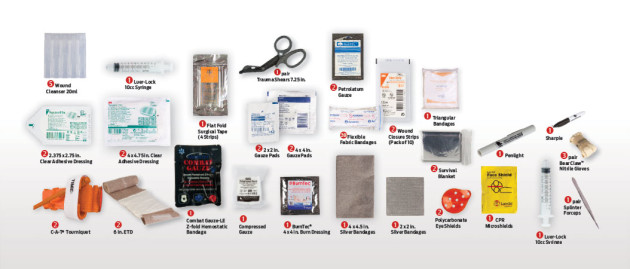
Large – ATAK (Amphibious adventure)
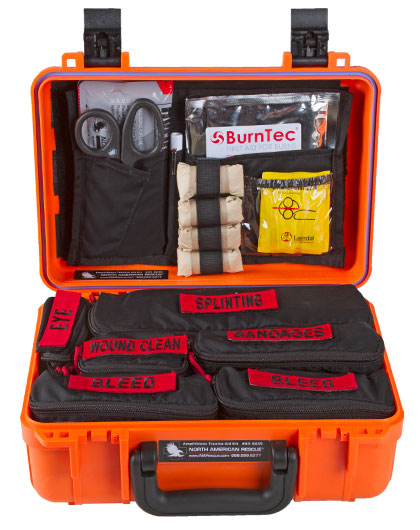
- Enough equipment to treat 2-4 severely wounded patients.
- In my vehicle always. Regardless of if you drive down any highway in the US or go spearfishing in the most remote location in Central America, this size vehicle kit is a must have.
— Contents:
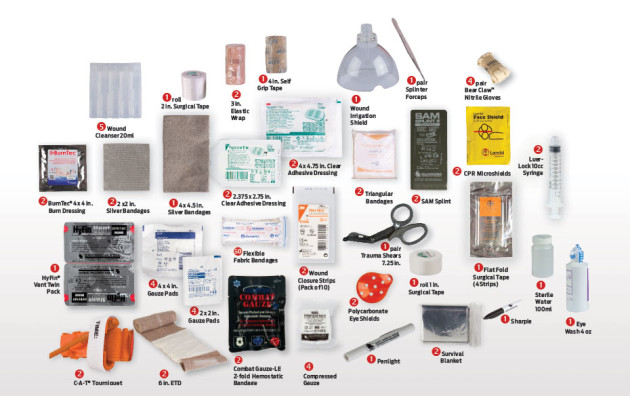
At the end of the day, the most effective life saving tool in existence, without the skill, capacity and opportunity to use it properly, is ultimately worthless. Simply possessing a firearm is not enough, an individual must commit the appropriate energy to mastering the tool. The same goes for emergency medical procedures. Tactical trauma casualty care courses for civilians are becoming more and more available. Most are one or two days long and are very reasonably priced. A very well stocked, multi person aid kit can be purchased for about the same amount as a new pistol and a personal kit costs about what a single day’s worth of range time goes for.
I fully understand that shooting can be a cathartic hobby and am no way advocating discontinuing the pursuit. The bottom line, however, is possessing the skill and available equipment to provide medical treatment is a necessary addition to any “sheep dog’s” arsenal.
(Images Courtesy of North American Rescue)

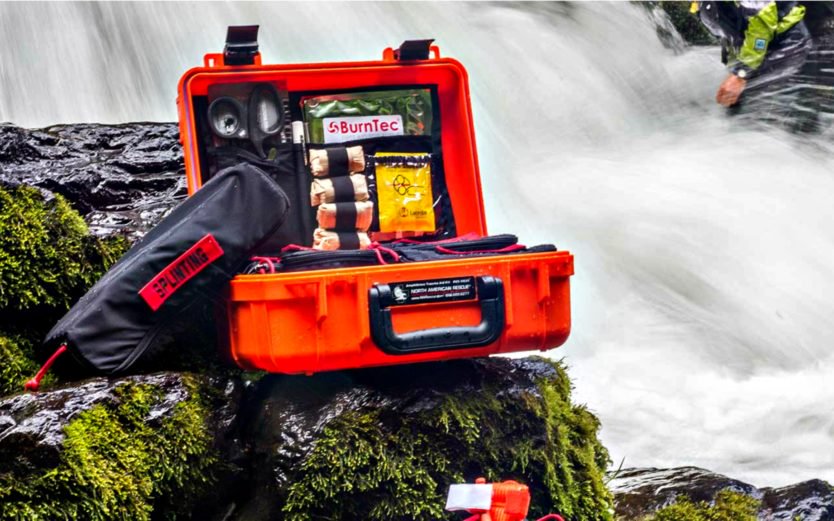








COMMENTS
You must become a subscriber or login to view or post comments on this article.